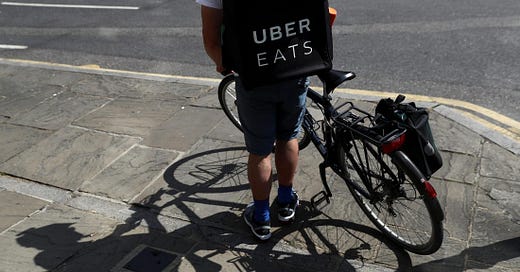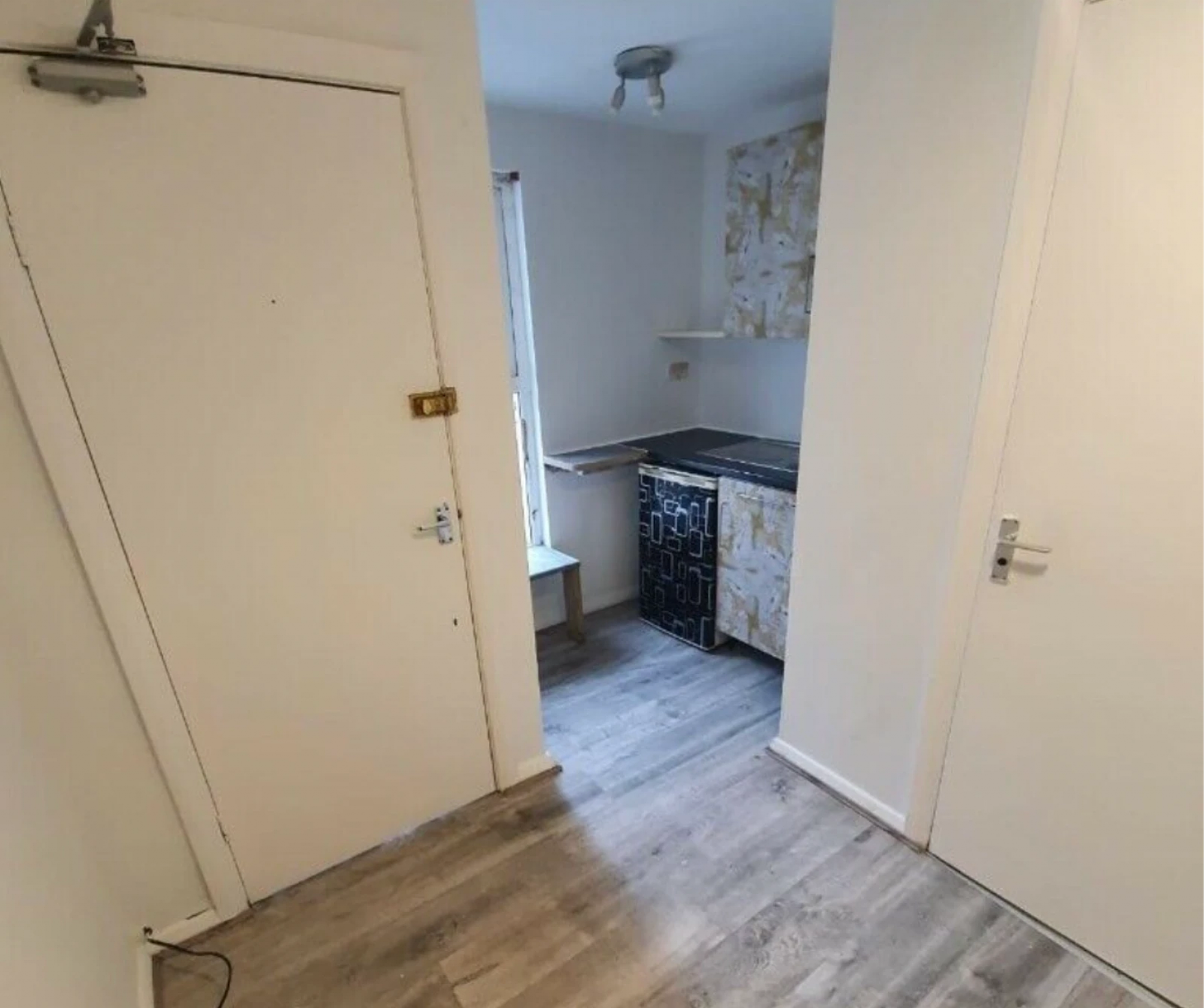There has been some great writing about London this year (and some terrible writing too; MyLondon we are looking at you, oh and that thing the Evening Standard did with Trojan condoms… that was bad).
As we get to the end of the year we wanted to collect some of our favourite pieces in one place in case you get a few moments over the Christmas break to indulge in some great writing about the capital.
Food writing but not as we know it
If we had to pick a London writer of the year then Jonathan Nunn would be the first name on the list. His Vittles newsletter has gone from strength to strength throughout 2021 (check out the first part of his epic 60 South Asian Dishes Every Londoner Should Know for an example of the incredible stuff he’s putting out). But our pick of Jonathan’s writing would be something he wrote for the Economist’s 1843 magazine back at the beginning of the year.
‘Gulp! The secret economics of food delivery’ is a write up of Nunn’s experiences working as an Uber Eats courier for six months, something he did to get first hand experience of how the ‘gig economy’ actually works, how these businesses are changing the idea of what a restaurant is and how we eat as well as how the fabric of London is morphing to accommodate these changes. It’s a great piece of journalism (accompanied by some fantastic photography) and it deservedly won a Foreign Press Association Media Award earlier this year.
For more on this topic, read our interview with Jonathan and our issue on dark kitchens and dark stores here.
Another brilliant, food-related story from 2021 was ‘A Partition That Separates Us From Them’, Yvonne Maxwell’s unflinching look at the “unseen segregation” that lies behind the “rich cultural melting pot” of London. It’s an article that takes the idea of food writing to a whole new level and it’s a must read.
The kids are alright
There were a lot of hand-wringing ‘future of London’ articles written this year, but maybe the most optimistic one was Dazed’s interview with five teenage girls. Their conversation explores “the future of city-living through their eyes, their dreams, and their anxieties” and even though it took place in the same week of Sarah Everard’s murder it’s hard not to feel a little bit uplifted by their intelligence and spirit.
On a similar note, Vice’s visit to the East London Arts and Music school (“London’s coolest school”) also makes the future feel a little less terrifying.
Gentrification examination
One of the big topics of conversation in that Dazed piece is gentrification, and there’s been a lot written on that subject in 2021 (admittedly, not all of it worth reading). In the Independent the author Alex Wheatle wrote an excellent personal essay about the. changing face of Brixton, which asks the question “what’s happened to my generation of black Brixtonians now that the area's character and indeed purpose has changed so utterly?”.
Of course, we can’t talk about gentrification without talking about Nine Elms, and there’s been some excellent analysis of what’s going on in that corner of London this year. One piece we’ve mentioned a couple of times in the newsletter has been the Guardian’s Penthouses and poor doors: how Europe's ‘biggest regeneration project’ fell flat, which was published back in February.
More recently, the former director of the Design Museum, Deyan Sudjic, wrote an essay titled simply Nine Elms and the destruction of London for Prospect magazine, which looks at the development from a slightly broader perspective and explains what this “architectural freak show” tells us about “the collision between global finance and local planning, and the unintended consequences of the attempt to shift responsibility for affordable housing and infrastructure from public control to private developers.”
For more on this have a read of our interview with a gentrification researcher and also our conversation with the author and architectural journalist, Will Wiles.
The two towers stories
It’s maybe a bit strange that some of the best reporting on London this year has come from the New York Times. Just a few weeks ago we linked to their piece headlined ‘You’re Not Helpless’: For London Women, Learning to Fight Builds Confidence and they even covered the opening of the first Popeye’s in Britain last month. But our favourite this year was definitely Historic London Synagogue Fights to Stay Out of the Shadows which looked at the battle to stop the the 320-year-old Bevis Marks Synagogue being put into “near-permanent twilight” by the construction of two office towers.
The other tower story this year was from way back in January when everyone got a bit scared that all the ravens at the Tower of London were going to disappear and “the kingdom of Britain would fall”. The Independent spoke to the Tower’s ravenmaster Chris Skaife for a great interview (a warning, this one is behind the Independent’s paywall).
You’re booked
The award for ‘London long read most likely to be made into a film’ goes to Vanity Fair’s article on the Elusive, Acrobatic Rare-Book Thieves and how “detectives from Scotland Yard, Romania, Germany, and Italy nabbed the so-called Mission: Impossible gang, which pulled off a string of daring warehouse heists.” It’s a great yarn and there’s even a happy ending.
Fashion on The Fence
The Fence is our favourite hard copy magazine right now. They describe themselves as “fact, fiction, features and funnies from the UK’s best and brightest writers” and while that seems quite a broad remit, they’ve carved out a definite cultural niche for themselves over the past couple of years and they already feel like a bit of a London institution.
Some of the stand out pieces we’ve enjoyed recently are The Worst Bar in London, In Search of Memsahib and this short story by Rebecca Watson. But our favourite has to be Club Couture, Jade Angeles Fitton’s look back at her time working at London fashion week (if only for the Kanye West anecdote).
Notable mentions
Dawn Foster was the journalist London really couldn’t afford to lose this year. Jess McCabe’s obituary for Dawn in the Guardian managed to do her work and her personality immense justice.
Dawn would likely have approved of the piece Olivia Konotey-Ahulu’s wrote for Bloomberg in May on How London’s Property Boom Left Black Britons With Nothing.
Joel Golby’s ‘Rental Opportunity of the Week’ column for Vice is much more than a pop at greedy London landlords. If you need convincing then this example from the end of November is a proper tour de force.
News bits
TfL funding update: Late on Friday the network announced it had reached “another short-term stop-gap funding deal with central government to fund the capital’s transport network until early February.” The next deadline is February 4.
On Sunday the mayor said that, in his view, more Covid restrictions are “inevitable”. Sadiq told the BBC “If we don't bring in new restrictions sooner rather than later you’re going to see even more positive cases and potentially public services like the NHS on the verge of collapse, if not collapsing.”
In the early hours of Sunday morning Piers Corbyn was arrested on “suspicion of encouraging people to burn down the offices of MPs who voted in favour of coronavirus restrictions.”
Ian Visits has the details of the plan for a £1.55 billion redevelopment of Liverpool Street station “that would see it become a two-level station with a much larger entrance built next to the tube station.”
Shoreditch’s Cargo is no more. The club has shut “after police raised concerns about crime and disorder that they said was ‘associated’ with it.”
The Guardian has a look at the Kings Head theatre, “the pint-sized theatre that opened in the backroom of a London pub in 1970” as it prepares to put on “five past productions by major playwrights before moving into a bigger, purpose-built home, next year.”
Talking of long reads: Bloomberg has published an entire article about legendary “South London chicken joint” Morley’s.







Apologies, we messed up the link for Jonathan's article. Fixed in the online version. It should be https://www.economist.com/1843/2021/01/26/gulp-the-secret-economics-of-food-delivery